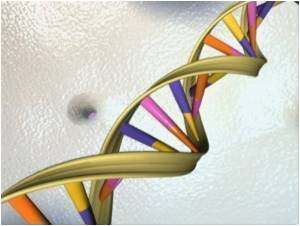A new study says that digestive tract disorder pyloric stenosis is more prevalent among twins and siblings, indicating that this is a genetic and inherited disorder.

Pyloric stenosis is a severe and potentially fatal condition in which apparently healthy in-fants, typically 2 to 8 weeks old, develop an inability to pass food from the stomach into the duodenum (part of the small intestine).
"Today pyloric stenosis is the most common condition requir-ing surgery in the first months of life. Among white individuals, pyloric ste-nosis is relatively common, with an incidence of 1.5 to 3 per 1000 live births," wrote the authors.
"Case reports have suggested familial aggregation [the occurrence of more cases of a given disorder in close relatives of a person with the disorder than in control families], but to what extent this is caused by common environment or inheritance is unknown," he added.
Dr. Camilla Krogh, of the Statens Serum Insti-tut, Copenhagen, Denmark, and colleagues examined the familial aggregation of py-loric stenosis from monozygotic twins (derived from a single fertilized egg) to fourth-generation relatives in the population of Denmark.
The population-based cohort study included 1,999,738 chil-dren born in Denmark between 1977 and 2008 and followed up for the first year of life, during which 3,362 children had surgery for pyloric stenosis.
Advertisement
In dizygotic twins (derived from two separately fertilized eggs), 7.7 percent with an affected twin had py-loric stenosis.
"Our findings argue for a hereditary component of pyloric stenosis: (1) pre-dominance in boys; (2) familial aggre-gation in first-, second-, and third-degree relatives; (3) high concordance rate in monozygotic twins; (4) similar degree of aggregation in dizygotic twins and siblings; (5) difference in risk for siblings vs. maternal half-siblings (as well as cousins vs. half-cousins); and (6) heritability of 87 percent."
"... with a heritability esti-mate of 87 percent, it seems that familial ag-gregation is primarily explained by shared genes that may affect re-sponses to postnatal factors. The high rates for twins and siblings should be considered in counseling families with affected children," concluded the researchers.
The study was published in the latest issue of JAMA.
Source-ANI














